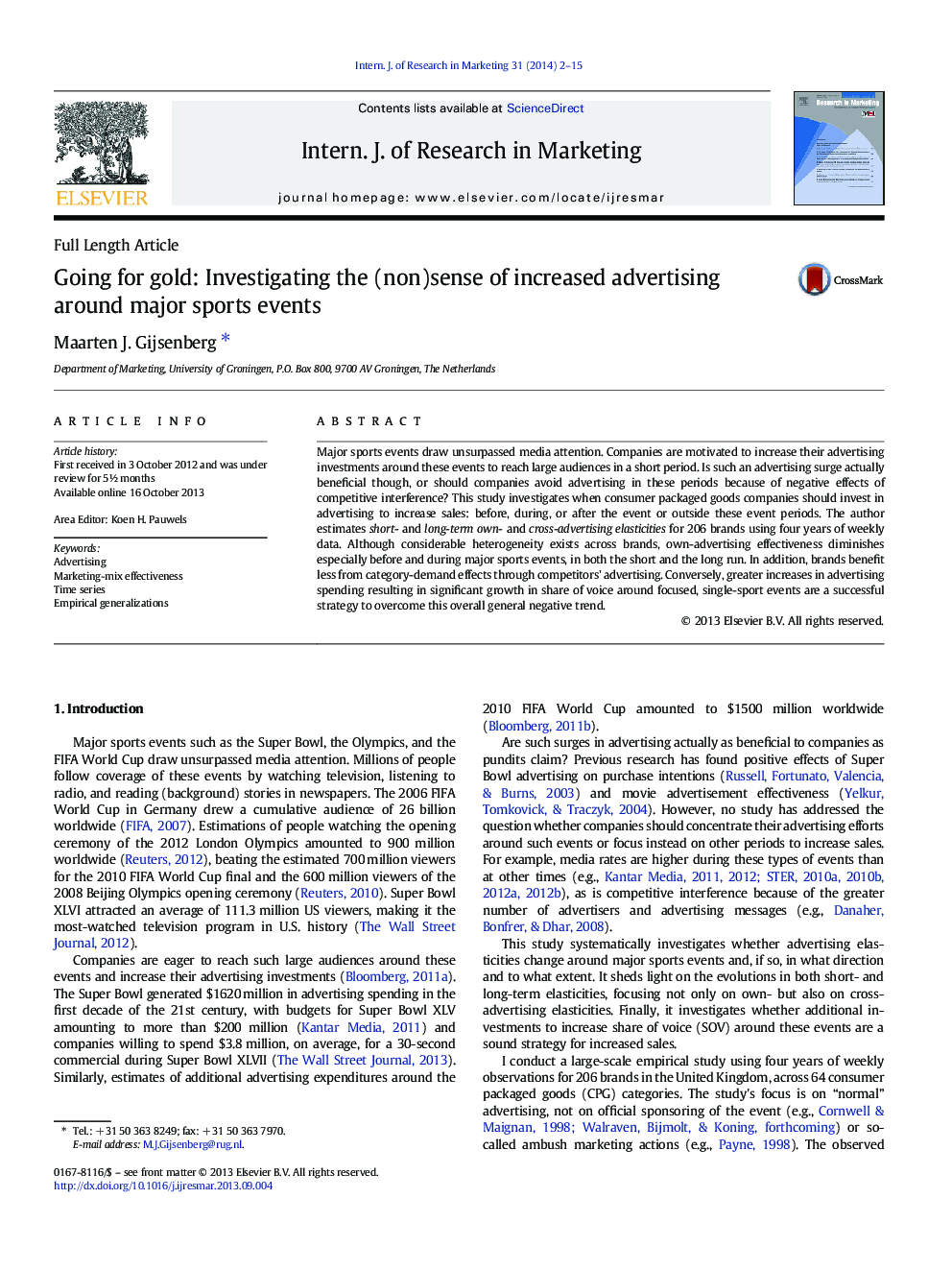| کد مقاله | کد نشریه | سال انتشار | مقاله انگلیسی | نسخه تمام متن |
|---|---|---|---|---|
| 880162 | 1471434 | 2014 | 14 صفحه PDF | دانلود رایگان |
• Advertising elasticities are reduced around major sports events.
• Reduction is most severe for short-run elasticities.
• Own and competitive elasticities show similar patterns.
• Perceived product fit does not affect patterns.
• Significant increase of SOV around single-sports events mitigates reduction.
Major sports events draw unsurpassed media attention. Companies are motivated to increase their advertising investments around these events to reach large audiences in a short period. Is such an advertising surge actually beneficial though, or should companies avoid advertising in these periods because of negative effects of competitive interference? This study investigates when consumer packaged goods companies should invest in advertising to increase sales: before, during, or after the event or outside these event periods. The author estimates short- and long-term own- and cross-advertising elasticities for 206 brands using four years of weekly data. Although considerable heterogeneity exists across brands, own-advertising effectiveness diminishes especially before and during major sports events, in both the short and the long run. In addition, brands benefit less from category-demand effects through competitors' advertising. Conversely, greater increases in advertising spending resulting in significant growth in share of voice around focused, single-sport events are a successful strategy to overcome this overall general negative trend.
Journal: International Journal of Research in Marketing - Volume 31, Issue 1, March 2014, Pages 2–15
